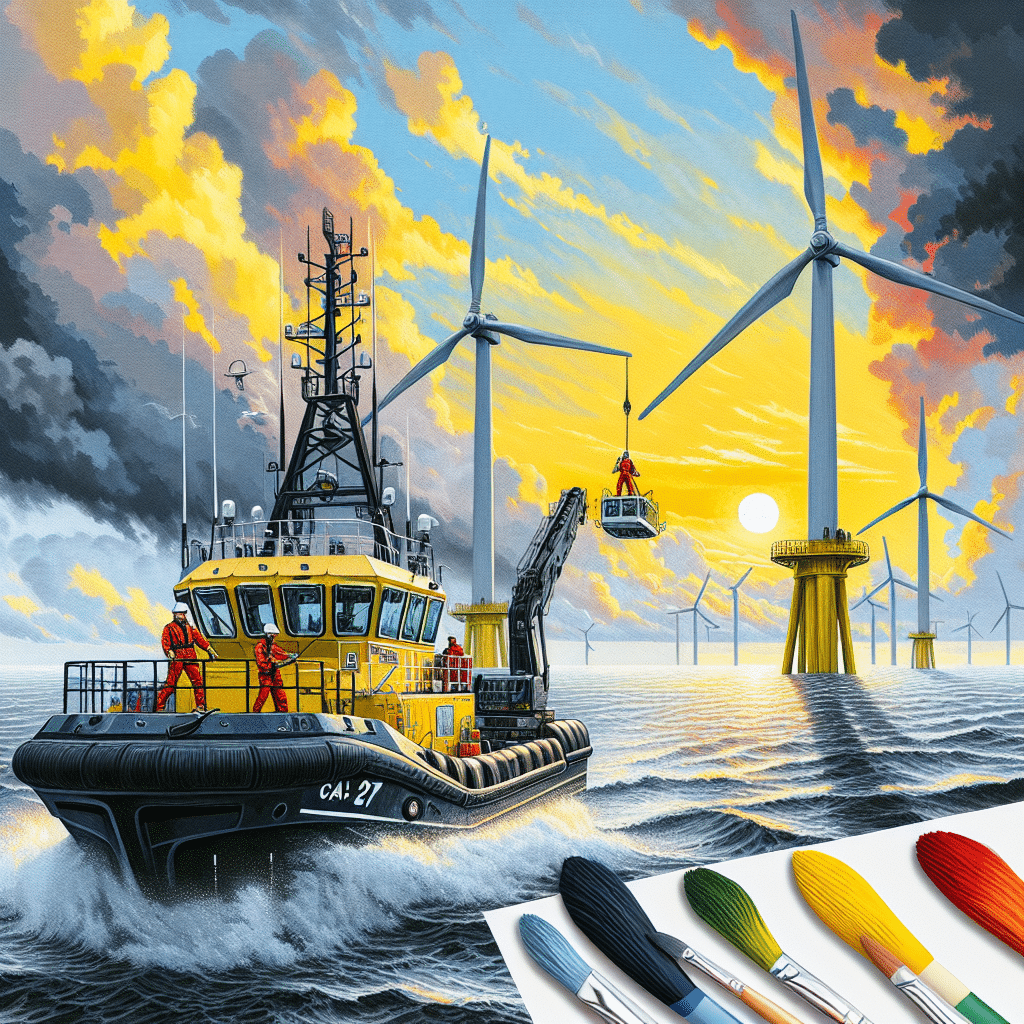ESNA (Espeland and Skomedal Naval Architects) and Strategic Marine have agreed to co-develop a surface effect ship crew transfer vessel for offshore wind. The collaboration between Norwegian design firm ESNA and Singapore-based shipbuilder Strategic Marine aims to create a faster and more efficient vessel for transporting crew to and from offshore wind farms. The agreement to develop a Surface Effect Ship (SES) crew transfer vessel highlights the growing importance of offshore wind power and the need for specialized vessels to support the industry.
Collaboration for Faster Offshore Wind Crew Transfer Vessel
ESNA and Strategic Marine have signed an agreement to develop a Surface Effect Ship Crew Transfer Vessel (SES CTV) for offshore wind. The purpose of this collaboration is to create a vessel that can provide faster and more efficient crew transfers to offshore wind farms. The SES technology utilized in the design of the vessel allows for improved stability, reduced fuel consumption, and increased speed, making it an ideal choice for the offshore wind industry.
“We are excited about this opportunity to collaborate with Strategic Marine and leverage our expertise in naval architecture to develop a specialized vessel that will enhance crew transfer operations in the offshore wind market,” said the spokesperson for ESNA.
This collaboration highlights the growing demand for efficient and specialized vessels in the offshore wind industry. As the world continues to transition towards cleaner and renewable energy sources, offshore wind power has emerged as a key component of sustainable energy generation. However, the construction and maintenance of offshore wind farms require reliable and efficient crew transfer vessels to ensure the smooth operation of these facilities.
Benefits of Surface Effect Ship Crew Transfer Vessels
The development of a Surface Effect Ship Crew Transfer Vessel (SES CTV) offers several benefits for the offshore wind sector. The SES technology allows for a unique hull design that reduces water friction, thereby increasing the vessel’s speed while minimizing fuel consumption. This increased speed and fuel efficiency result in cost savings and reduced environmental impact.
Additionally, the stability provided by the SES technology ensures a smoother and more comfortable ride for crew members during transfers to and from wind farms. This is particularly important in harsh weather conditions as it enhances safety and minimizes the risk of injury.
In summary, the collaboration between ESNA and Strategic Marine to develop a Surface Effect Ship Crew Transfer Vessel signifies the industry’s recognition of the need for specialized vessels to support the offshore wind sector. The use of SES technology offers improved speed, fuel efficiency, and stability, making it an ideal choice for crew transfers to offshore wind farms. With the continued growth of offshore wind power, this collaborative effort will contribute to the development of more efficient and sustainable operations in the industry.
- ESNA and Strategic Marine have signed an agreement to develop a Surface Effect Ship Crew Transfer Vessel (SES CTV) for offshore wind
- The collaboration aims to create a faster and more efficient vessel for crew transfers to and from offshore wind farms
- The use of SES technology allows for improved stability, reduced fuel consumption, and increased speed
- Offshore wind power is a growing industry and requires specialized vessels to support construction and maintenance operations
- The SES CTV offers benefits such as cost savings, reduced environmental impact, and enhanced safety for crew members during transfers




Leave a Reply